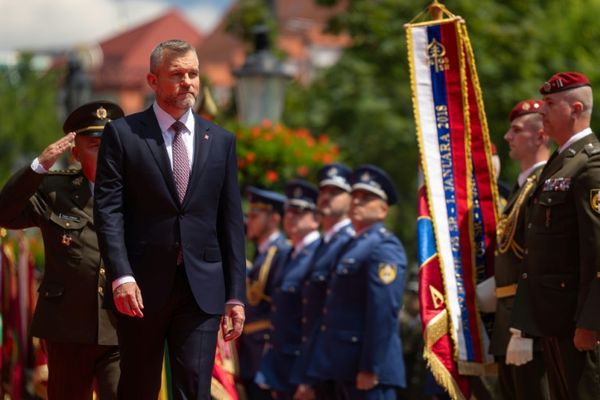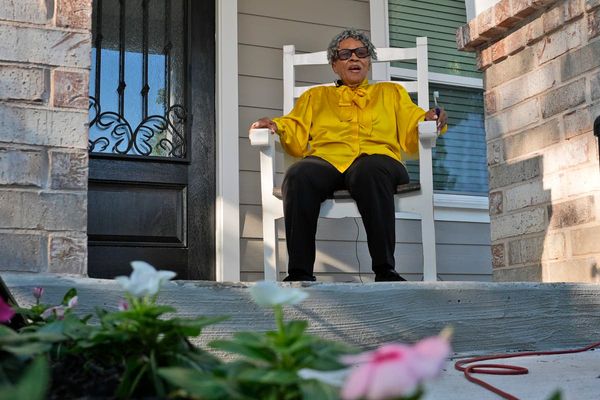Behind the parade ground in the Royal Military College, Duntroon, stands a mature gum tree - it's one of the more magnificent specimens you'll see in suburban Canberra.
Back in 1958, under this tree, the duty sergeant noticed the sudden appearance of a pile of dirt and promptly ordered the cadets whose quarters were in the adjoining Cork Block to "clean it up".
The cadets duly spread out the dirt around the root line of the tree.

However, when a week later the duty sergeant returned to inspect the site, much to the surprise of most of the cadets, the dirt had mysteriously returned.
While many of the cadets genuinely had no idea about the origins of the dirt, an inner circle of residents of Cork Block, including Ross Thomas, knew exactly where it came from - a tunnel of sorts surreptitiously being dug directly under Thomas's room.

Starting in May that year, Thomas and his mates spent every spare moment, usually during a study period or after "lights out", feverishly digging away. Legend has it on one particularly industrious Sunday afternoon, over 40 kit bags of soil were carted out of the concealed cavern and deposited under the tree.
I'm sure you wouldn't be alone if the daring escapades of the cadets revived memories of The Great Escape (1963) in which Steve McQueen and co carried sand from a tunnel they were digging to freedom and emptied it in the exercise yard of their German POW camp.

However, despite the fact cadets from the 1950s disparagingly referred to their college as "the clink" due to the strict disciplinary regime, these ingenious young men weren't digging an escape route, in fact they were doing the very opposite. They were creating a hidey hole beneath Thomas's room, accessible via a trap door hidden in the base of his wooden bed. And no, it's purpose wasn't to squirrel away booze, rather, it was for their "Number 13s" - items which didn't have a fixed place, like dirty football boots or non-standard-issue items, and which they would be reprimanded for if found during regular room inspections.

The discovery of the soil was only a minor set-back to their covert operations and by August of 1958 Thomas and his shovel-wielding mates had successfully hacked out a secret bunker that measured at least 3.5 metres long and almost as wide.
While "Cork Block Cavern", as it was first known initially, served as "the mother of all Number 13s", the cadets soon realised it was also ideal for underground parties. The industrious cadets rigged it up with electricity, and "borrowed" some curtains from the officers' mess and some concrete from a nearby artillery magazine for the floor. A hidden switch was also installed in Thomas's room, so if the company commander turned up unannounced, the bunker lights could be switched off as a warning to those below.

Unfortunately, the best-kept secret on Duntroon was exposed the next year when Thomas was left with little choice but to spill the beans about the covert bunker hidden beneath the floorboards of his room.
Thomas had been assigned to another room and the new occupant had reported a small amount of money stolen. Thomas had been spotted near the room, and as lead suspect was summoned to the adjutant's office to explain why he was in his old room.
While Thomas, who explained he was returning to his "bunker" to retrieve a personal item he'd left behind the year before, and who now likes to maintain a low profile, told your akubra-clad columnist back in 2012 word-for-word what happened next.

"The adjutant's response was, 'I hope for your sake, lad, that there is a hole when I go in there tomorrow'."
"I thought to myself, you aren't going to be disappointed," revealed Thomas. "An off-campus cop then asked, 'Is this hole big enough that you could put your hand in and place a few notes?', to which I replied, 'You won't be disappointed either!'"
Thomas feared the worst - possibly being thrown out of Duntroon for his role as ringleader in creating the hidey hole, but remarkably, that was the last he heard from his superiors about the Cork Block Cavern, also known as the "Room within a Room".

"Strangely they went quiet, they never officially acknowledged it - we took it as a kind of silent compliment," he revealed.
It may have taken more than six decades but at a special ceremony earlier this month, Thomas and several of his colleagues were invited to Duntroon for a low-key ceremony to mark the 65th anniversary of the Room within a Room. They even clambered down the rickety stairs beneath Thomas's old bed to check out their handiwork.

Lieutenant-Colonel Brian Hickey, the current Commanding Officer at Duntroon who presented Thomas and the other original members of the Room within a Room with a plaque and other mementos, says the group has been "officially recognised now".
Not surprisingly, the visit by the 1958 cadets has rekindled interest in the secret bunker.
"Cadets and officers who haven't seen it are now requesting visits," reports Lieutenant-Colonel Hickey who has plans to maintain it as an in-house museum for years to come.
"I hope it will be preserved for future generations to appreciate - it really has become part of the fabric of Duntroon," he says. "It speaks to that Australian larrikinism and a push-back on authority without being malicious in any way."
Given the resurgence in interest in Cork Block Cavern, perhaps Duntroon's top brass should install surveillance cameras under that big gum tree. It couldn't happen again, could it?
Act of larrikinism part of college's history
Testing times: First-year cadets at Duntroon are tested about the college's history and folklore, including the Room within a Room, in a test they sit after nine weeks on campus. "If they don't pass the test, they don't get weekend leave," explains Lieutenant-Colonel Brian Hickey.
Calling Card: Many cadets who visit the Room within a Room scrawl their names on the walls. Additional graffiti on the painted brick pylons is very tame, which Lieutenant-Colonel Hickey believes is because "the cadets really respect the room and what it stands for". One of the more creative tags penned recently in black texta reads "Angus Campbell 1984" - a not-so-subtle reference to the current Chief of the Defence Force. While General Campbell did graduate from Duntroon in 1984, there's no other evidence to suggest that he recently ventured underground, texta in hand, just to sign his name.
Did You Know? In 1986, during his first year at Duntroon, Jeremy Hanson, a former army officer and current Deputy Leader of the ACT Opposition, lived three doors down from the secret bunker. "Even then it was still a place where we would hide out for a few hours sometimes and just drink and talk," Hanson says. "It was quiet bonding and would make me think of those who had gone before us and had then gone on to serve in places like Vietnam."
Number 13s: During the 1950s and later, cadets were required to neatly display their official belongings in dedicated spaces numbered one to 12 in their rooms. For example, hanging space in the wardrobe was number one and shelving for shirts were to be neatly folded in number two. Items like muddy football boots that needed to be hidden from the prying eyes of superiors, were called Number 13s.
WHERE IN THE SNOWIES?

Rating: Easy - Medium
Clue: Longest in the world?
How to enter: Email your guess along with your name and address to tym@iinet.net.au. The first correct email sent after 10am, Saturday August 26 wins a double pass to Dendy, the Home of Quality Cinema.

Last week: Congratulations to Roger Shelton of Spence who was first to correctly identify last week's photo as Leighton Gardens in Argyle Street (Illawarra Highway), Moss Vale. The unique and individual handmade winter warmers sewn to the trees are the dedicated work of the Country Women's Association, Moss Vale Evening Branch and are on display until October 1.
The Vice Regal clue related to the waiting room at the nearby Moss Vale Railway Station built specifically for the use of NSW governors-general whose official country residence between 1882 and 1957 was located at nearby Sutton Forest. Roger just beat Sharon Crone of Jerrabomberra, Ian McKenzie of Fisher, and Andy Hogan of Bonython.
Courageous choristers

This column's recent exposé on the bell tower at Braidwood's St Andrew's Anglican Church which doubled as a lookout for enemy aircraft during World War II prompted Dianne Baker to recall the day she joined fellow singers to perform at the top of the tower.
"Around twenty years ago, our local choir was persuaded by one of our members, a delightfully eccentric Englishman, to emulate the tradition of singing from bell towers to mark special occasions," reports the Braidwood resident of 25 years.
"Accordingly, at the Airing of the Quilts in late November of that year we ascended the bell tower and sang to the (small) crowd assembled below.
"It was a fun thing to do, but climbing that narrow, steep and winding staircase was a little daunting. The stone walls were rough, and the only light was what came through the slits in the tower."
Dianne recalls that after the performance, "a local engineer deemed the tower unsafe for several hefty choristers to be tramping over it".
CONTACT TIM: Email: tym@iinet.net.au or Twitter: @TimYowie or write c/- The Canberra Times, GPO Box 606, Civic, ACT, 2601
We've made it a whole lot easier for you to have your say. Our new comment platform requires only one log-in to access articles and to join the discussion on The Canberra Times website. Find out how to register so you can enjoy civil, friendly and engaging discussions. See our moderation policy here.







